How to Make Quilting A Fun and Relaxing Hobby
Quilting is not just a craft; it's an experience that can transform your free time into a rewarding and therapeutic journey. Whether you're a seasoned quilter or just starting out, the joy of creating something beautiful with your own hands is unparalleled. So, how can you make quilting a fun and relaxing hobby? Let's dive into some strategies that will not only enhance your skills but also enrich your overall quilting experience.
First things first, selecting the right materials is crucial to your quilting success. Imagine diving into a project with fabrics that don't resonate with your style or tools that make the process cumbersome. To avoid this, consider the following:
- Fabric Quality: Opt for high-quality cotton fabrics that feel good to the touch and are durable.
- Tools: Invest in essential tools like rotary cutters, cutting mats, and sewing machines that suit your skill level.
- Budget: You don’t have to break the bank. Look for sales or consider buying remnants for smaller projects.
By carefully selecting your materials, you set the stage for a more enjoyable quilting journey.
For beginners, mastering basic techniques is a game-changer. Think of it as learning to ride a bike; once you get the hang of it, the world opens up. Start with essential skills like cutting, piecing, and sewing. These skills are the foundation of every quilt you will create.
Proper cutting is vital for achieving precision in your quilt pieces. Using the right tools, like a rotary cutter, can make all the difference. Safety first! Always use a cutting mat and keep your fingers clear of the blade. Accurate cutting leads to better piecing, which is crucial for a polished final product.
A rotary cutter is a quilter's best friend. It allows you to cut multiple layers of fabric with ease. To use one safely, hold the cutter firmly and cut away from your body. Practice on scrap fabric until you feel comfortable.
Accurate measurements are key to successful quilting. Use a clear ruler and ensure you're measuring from the same point each time. A small error can snowball into a significant issue down the line, so take your time and double-check your work.
Sewing techniques play a vital role in quilting. From straight seams to intricate patterns, knowing how to sew properly will enhance the overall quality of your work. Don't shy away from practicing different sewing methods to find what works best for you.
Inspiration fuels creativity. Sometimes, all you need is a spark to ignite your passion for quilting. Look for inspiration in various places:
- Online Resources: Websites, blogs, and social media platforms are treasure troves of ideas.
- Quilting Communities: Joining local quilting groups can provide support and fresh ideas.
Engage with others and share your ideas; you might just find your next project waiting to be discovered!
A dedicated quilting space can significantly enhance your experience. Think of it as your creative sanctuary. Organize your tools in a way that makes them easily accessible, and create a comfortable atmosphere with good lighting and seating. Your environment should inspire you to quilt, not hinder you.
Keeping your quilting tools organized is essential for efficiency. Consider using storage boxes, pegboards, or even wall-mounted shelves. This way, everything has its place, and you can focus more on creating rather than searching for your tools.
Lighting, seating, and decor can transform your quilting space into a cozy haven. Choose a comfortable chair that supports your back, and ensure your workspace is well-lit to avoid straining your eyes. Adding personal touches, like photos or artwork, can make your space feel inviting.
Quilting can also be a meditative practice. By incorporating mindfulness techniques, you can enhance relaxation and enjoyment. Focus on the process rather than the outcome; it’s about the journey, not just the finished quilt. Take breaks when needed to prevent burnout and allow your creativity to flourish.
Diversity in quilting styles keeps your hobby fresh and exciting. From traditional to modern techniques, exploring various styles can expand your skills and creativity. Don’t be afraid to experiment with different patterns and fabrics to discover what resonates with you.
Finally, sharing your finished quilts can be incredibly rewarding. Consider participating in quilt shows or gifting your creations to loved ones. The joy of giving a handmade quilt is unmatched and can create emotional connections that last a lifetime.
Q: How long does it take to complete a quilt?
A: The time it takes to complete a quilt can vary greatly depending on the complexity of the design and your skill level. Some simple quilts can be finished in a weekend, while more intricate designs may take weeks or even months.
Q: Do I need a sewing machine to quilt?
A: While you can hand sew quilts, a sewing machine can significantly speed up the process and provide more precise stitching.
Q: Where can I find quilting classes?
A: Many local fabric stores offer quilting classes, and there are numerous online tutorials and courses available as well.

Choosing the Right Materials
When it comes to quilting, the materials you choose can make or break your project. Think of it as the foundation of a house; if the foundation isn't solid, everything built on top will be shaky. So, how do you select the best fabrics and tools that suit your style and budget? Let’s dive into the world of quilting materials!
First and foremost, consider the fabric. The right fabric can bring your vision to life. Cotton is the most popular choice among quilters due to its versatility, durability, and ease of handling. However, don’t shy away from exploring other materials like linen, flannel, or even silk, depending on the look and feel you want to achieve. When selecting fabrics, it’s essential to pay attention to the weight, texture, and pattern. A good rule of thumb is to choose fabrics that complement each other in color and design. For example, if you’re working with a floral pattern, pairing it with a solid color can create a beautiful contrast.
Next up, let’s talk about tools. Investing in quality tools can enhance your quilting experience significantly. Here are some essential tools to consider:
- Rotary Cutter: This tool is a game-changer for cutting fabric accurately and efficiently.
- Cutting Mat: Protects your surfaces and extends the life of your rotary cutter.
- Ruler: A clear acrylic ruler helps in making precise measurements.
- Needles and Thread: Choose needles that are appropriate for your fabric type and thread that complements your project.
Now, let’s not forget about the importance of budgeting. Quilting can be an expensive hobby if you let it be, but it doesn’t have to break the bank. Look for sales, coupons, and discounts at local fabric stores or online shops. Many quilters also find joy in upcycling old clothes or fabric scraps, turning what would be waste into beautiful quilt pieces. This not only saves money but also adds a unique touch to your creations.
Lastly, consider your personal style. Are you drawn to bright colors and bold patterns, or do you prefer muted tones and subtle designs? Your quilting materials should reflect your personality. Take the time to explore different fabric stores, both online and brick-and-mortar, to find what resonates with you. Don’t hesitate to mix and match different styles; after all, quilting is all about creativity and self-expression!
In summary, choosing the right materials for quilting is a blend of understanding your needs, budget, and personal style. With the right fabrics and tools, you’ll not only enhance your quilting skills but also make the process much more enjoyable. So, gather your materials, and let your creativity flow!
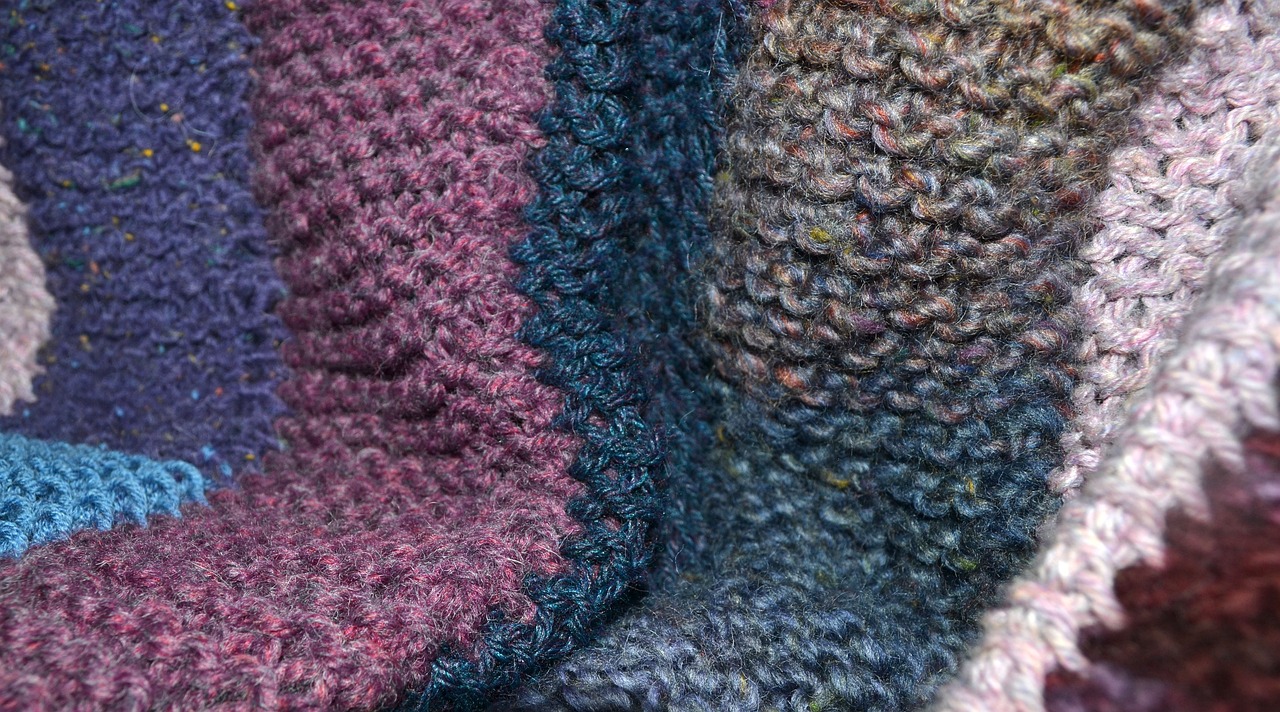
Learning Basic Techniques
When diving into the world of quilting, understanding the basic techniques is crucial for both beginners and those looking to refresh their skills. Mastering these fundamentals can transform your quilting experience from daunting to delightful. Whether you're piecing together your first quilt or refining your technique for a more complex design, having a solid grasp of the essentials is key. So, let’s break down the core skills you’ll need to embark on this creative journey.
First and foremost, let’s talk about cutting techniques. Proper cutting is essential for ensuring that all your quilt pieces fit together seamlessly. Using the right tools can make a world of difference. A rotary cutter, for instance, is a game-changer. It allows for smooth, straight cuts and can handle multiple layers of fabric at once. To achieve the best results, always use a cutting mat and a ruler to guide your cuts. Here’s a quick overview of the tools you’ll need:
| Tool | Purpose |
|---|---|
| Rotary Cutter | For cutting fabric quickly and accurately. |
| Cutting Mat | Protects your surfaces and provides a grid for alignment. |
| Ruler | Ensures straight cuts and accurate measurements. |
Another vital aspect of cutting is measuring accurately. You can have the sharpest tools, but if your measurements are off, your quilt will suffer. Always double-check your measurements before making any cuts. It’s a good habit to get into, and it can save you a lot of frustration later on!
Now, let’s dive deeper into using a rotary cutter effectively. Start by ensuring that your blade is sharp; a dull blade can lead to uneven cuts and frustration. When cutting, hold the cutter at a comfortable angle, and let the weight of the cutter do the work. Remember to keep your fingers clear of the blade to avoid accidents. As you gain confidence, you’ll find that a rotary cutter can significantly speed up your cutting process, allowing you to spend more time enjoying the creative aspects of quilting.
Measuring accurately is more than just a skill; it’s an art form in quilting. Use a quality ruler with clear markings, and always measure twice before cutting. If you’re working with fabric that has a directional pattern, be sure to consider how your pieces will align in the final quilt. A simple miscalculation can lead to a jarring visual effect that detracts from your hard work. So, take your time and enjoy the process of measuring and cutting; it’s the foundation of a successful quilt!
Once you’ve mastered cutting, the next step is learning essential sewing techniques. Sewing is where your quilt truly starts to come together. Whether you’re using a sewing machine or hand-stitching, understanding the basics of sewing will elevate your quilting game. Start with a quarter-inch seam, which is the standard for quilting. This small detail can make a big difference in how your quilt pieces fit together. If you’re using a sewing machine, practice maintaining a consistent seam allowance as you sew. It might take a little time to get used to, but soon it will become second nature.
Another important sewing technique is pressing your seams. Pressing is not just about making your quilt look neat; it also helps to set the seams and can prevent fabric from shifting. Use a hot iron and press your seams open or to one side, depending on the pattern instructions. This small step can significantly enhance the overall look of your quilt.
In conclusion, learning these basic techniques is your first step towards becoming a confident quilter. The more you practice cutting and sewing, the more skilled you will become. Remember, every quilt is a journey, and with each stitch, you are creating something uniquely yours. So grab your tools, find a cozy spot, and let your quilting adventure begin!
- What is the best fabric for beginners? Cotton fabric is often recommended for beginners due to its ease of use and availability.
- How long does it take to make a quilt? The time it takes to make a quilt can vary widely based on the pattern and your skill level, but a simple quilt can take anywhere from a few hours to several weeks.
- Do I need a special sewing machine for quilting? While a standard sewing machine can work for quilting, a machine with a larger throat space can make quilting larger projects easier.
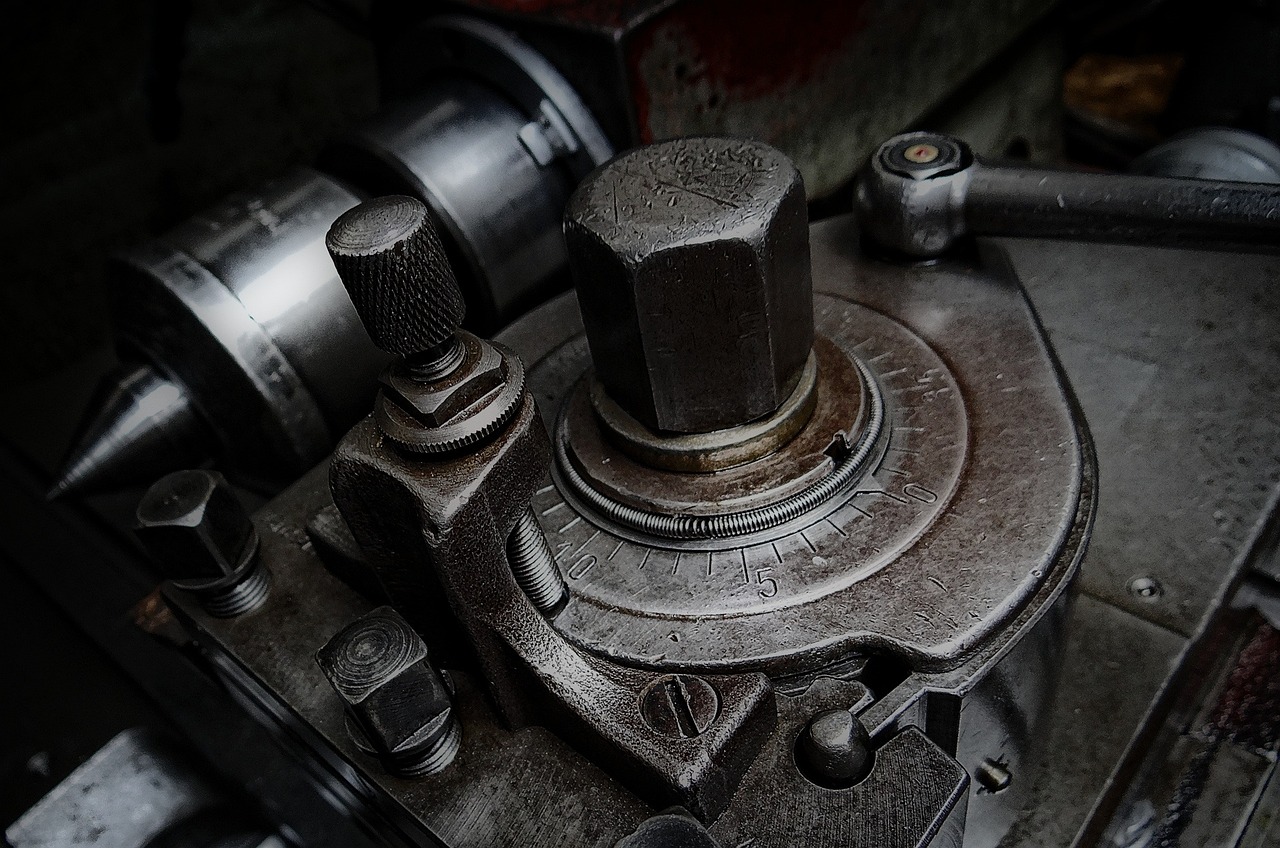
Cutting Techniques
When it comes to quilting, are the backbone of your project. Think of cutting as the foundation of a house; if it's not done right, everything else can crumble. To achieve perfect quilt pieces, you need to focus on precision and efficiency. The right tools and methods can make all the difference in your quilting journey. So, what tools should you consider? Let’s dive into the essentials!
First and foremost, a rotary cutter is your best friend. This handy tool allows you to cut through multiple layers of fabric with ease, making it a game-changer for any quilter. However, using a rotary cutter requires some technique to ensure safety and accuracy. Always cut away from your body and use a cutting mat to protect your surfaces. Speaking of cutting mats, investing in a high-quality mat is crucial, as it provides a durable surface that can withstand the wear and tear of frequent cutting.
Another key aspect of cutting is measuring accurately. Trust me, there’s nothing worse than realizing your pieces are off by a quarter of an inch after you’ve sewn them together! To avoid this, always use a reliable ruler. A clear acrylic ruler with grid lines will help you measure your fabric accurately. When measuring, take your time and double-check your numbers. Remember, “measure twice, cut once” is a mantra worth following!
For those who love a bit of organization, consider creating a cutting station. This dedicated space can hold your tools, fabric, and cutting mat, making the process smoother. You might want to include:
- Rotary cutter and replacement blades
- Acrylic rulers in various sizes
- Self-healing cutting mat
- Fabric weights or pins to hold fabric in place
By keeping everything organized, you’ll find that cutting becomes less of a chore and more of an enjoyable part of the quilting process. And let’s not forget about the importance of lighting! A well-lit area can help you see those fine details in your fabric, ensuring you cut accurately.
In summary, mastering cutting techniques is essential for any quilter who wants to elevate their craft. With the right tools, careful measurement, and a dedicated space, you can transform cutting from a daunting task into a delightful part of your quilting adventure. So grab your rotary cutter, clear your cutting mat, and let’s get those fabrics ready for piecing!
Q: What is the best tool for cutting fabric?
A: A rotary cutter is often considered the best tool for cutting fabric due to its efficiency and ability to cut multiple layers at once.
Q: How can I ensure my measurements are accurate?
A: Always use a clear acrylic ruler and double-check your measurements before cutting. The saying “measure twice, cut once” is a good rule of thumb!
Q: Is it necessary to have a dedicated cutting space?
A: While not mandatory, having a dedicated cutting space can make the process much more enjoyable and efficient by keeping your tools organized and accessible.

Using a Rotary Cutter
When it comes to quilting, precision is key, and using a rotary cutter can make all the difference in achieving clean, accurate cuts. This handy tool is a quilter's best friend, allowing you to slice through multiple layers of fabric with ease. Imagine trying to cut through a thick cake with a dull knife; it’s frustrating and messy, right? That’s why having a sharp rotary cutter is like having a hot knife through butter—it just makes everything smoother!
To get started with a rotary cutter, you’ll need to understand the basic anatomy of the tool. A rotary cutter typically consists of a circular blade, a handle, and a safety guard. The blade is what does the cutting, and it’s essential to keep it sharp for optimal performance. A dull blade can lead to uneven edges and frustration, so make sure to replace it regularly. Here’s a quick overview of the essential components:
| Component | Description |
|---|---|
| Blade | The circular cutting element that slices through fabric. |
| Handle | The part you hold onto, designed for comfort and control. |
| Safety Guard | A protective cover that keeps the blade safe when not in use. |
Now, let’s talk about safety. While rotary cutters are incredibly efficient, they can also be dangerous if not used correctly. Always cut away from your body and keep your fingers clear of the blade’s path. It’s also a good idea to use a cutting mat underneath your fabric. Not only does this protect your work surface, but it also helps prolong the life of your rotary cutter blade. Think of the cutting mat as a protective cushion, allowing your cutter to glide smoothly while safeguarding your table from any accidental cuts.
When you’re ready to cut, here’s a simple method to follow:
- Place your fabric on a cutting mat, ensuring it’s flat and wrinkle-free.
- Align your fabric with a ruler to ensure straight cuts.
- Hold the rotary cutter at a 45-degree angle for the best results.
- Apply even pressure as you roll the cutter along the ruler, letting the blade do the work.
Practice makes perfect, so don’t hesitate to experiment with different fabrics and cutting techniques. As you become more comfortable with your rotary cutter, you’ll find that it not only speeds up your cutting process but also improves the overall quality of your quilt pieces. Remember, the goal is to enjoy the journey of quilting, and having the right tools can make this experience both fun and fulfilling.
In summary, using a rotary cutter effectively can elevate your quilting game. With its ability to provide clean cuts, speed up your workflow, and enhance precision, it’s an essential tool for quilters of all skill levels. So, grab your rotary cutter, set up your cutting mat, and let your creativity flow!

Measuring Accurately
Accurate measurements are crucial in quilting, as they can make or break your project. Imagine trying to fit a puzzle piece that’s slightly too big or too small; it just doesn’t work! To avoid such frustrating scenarios, it's essential to adopt a meticulous approach to measuring your fabric. Start by choosing a reliable measuring tool—this could be a clear acrylic ruler or a fabric measuring tape. Each of these tools has its advantages, but the key is to ensure that you can see the measurements clearly without any distortion.
When measuring fabric, always remember to measure twice and cut once. This old adage holds true in quilting as well. Before you make any cuts, lay your fabric flat on a clean, even surface. Smooth out any wrinkles, as they can lead to inaccurate measurements. Use your ruler or measuring tape to determine the length and width you need, and mark your measurements with a fabric marker or chalk. This way, you can see exactly where to cut without second-guessing yourself.
Another important aspect of measuring accurately is understanding the grain of the fabric. Each piece of fabric has a grain direction—lengthwise and crosswise—which affects how the fabric behaves when sewn. Cutting along the grain ensures that your quilt pieces will hang and drape correctly. If you're unsure about the grain, simply pull on the fabric gently; the direction that stretches the most is the bias. Always cut your pieces with the grain for the best results.
Here are a few tips to keep in mind when measuring:
- Use a Sharp Cutting Tool: A rotary cutter is excellent for making precise cuts, but ensure it’s sharp to avoid jagged edges.
- Keep Your Ruler in Place: Use your non-dominant hand to hold the ruler firmly in place while cutting to prevent any slipping.
- Check Your Measurements: After cutting, double-check your pieces against your original measurements to ensure they are accurate.
By following these guidelines, you’ll be well on your way to achieving precise measurements that will enhance the quality of your quilting projects. Remember, the goal is to create pieces that fit together seamlessly, resulting in a finished quilt that you can be proud of. So take your time, measure carefully, and watch your quilting skills flourish!
- What tools do I need for accurate measuring in quilting?
You will need a clear acrylic ruler, fabric measuring tape, and a sharp rotary cutter for best results. - How can I ensure my fabric is not distorted when measuring?
Always lay your fabric flat on a clean, even surface and smooth out any wrinkles before measuring. - What is the importance of grain direction in fabric?
Cutting along the grain ensures that your quilt pieces will hang and drape correctly, preventing distortion in your finished quilt.
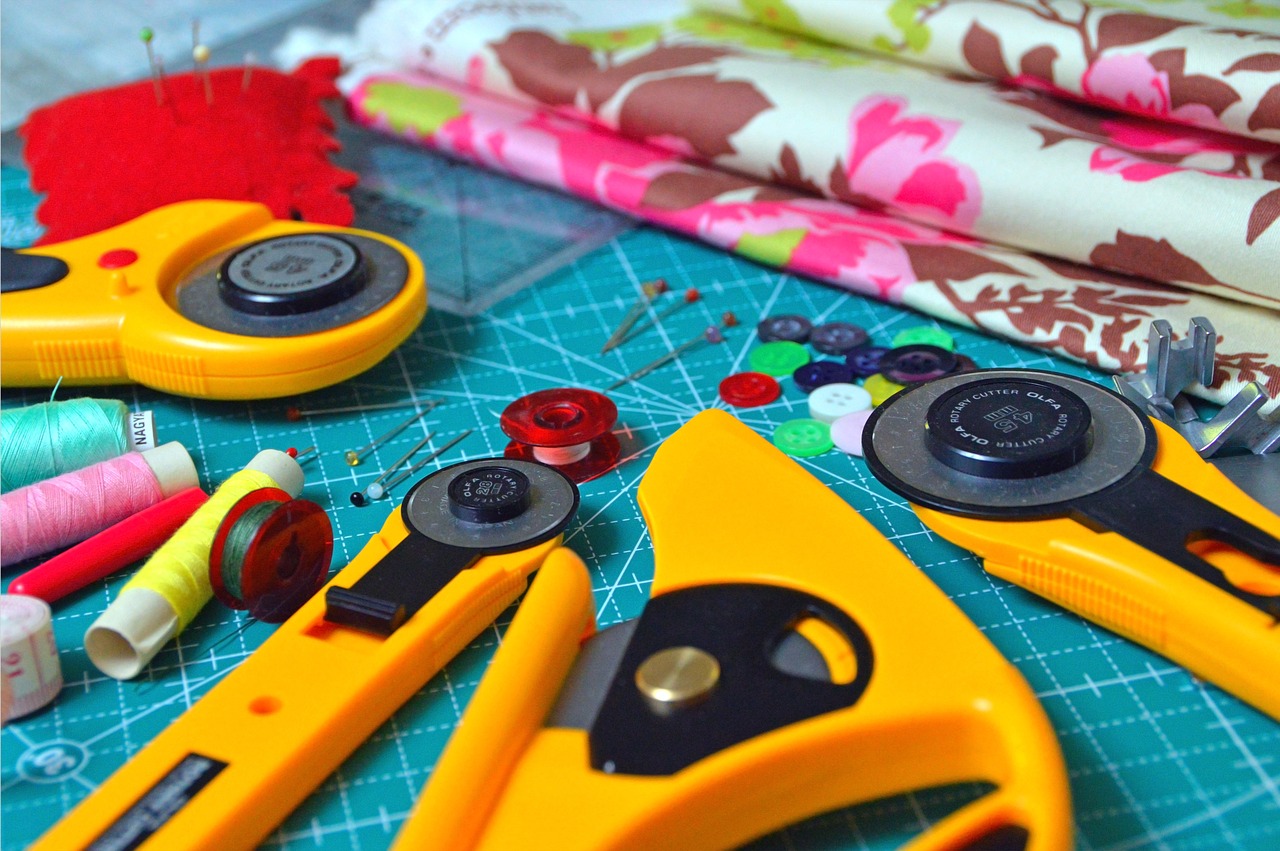
Sewing Techniques
Sewing is the heart and soul of quilting, and mastering various can significantly enhance the quality of your quilts. Whether you're a beginner or have some experience under your belt, understanding different sewing methods will not only improve your skills but also make the process more enjoyable. After all, who doesn’t want to create beautiful quilts that they can be proud of?
One of the fundamental techniques every quilter should learn is the quarter-inch seam. This precise measurement is crucial for piecing quilt blocks together correctly. If your seams are too wide or too narrow, it can throw off the entire design of your quilt. To ensure consistency, consider using a seam guide on your sewing machine. This handy tool will help you maintain that perfect quarter-inch seam every time.
Another essential technique is chain piecing. This method not only speeds up the sewing process but also minimizes fabric waste. Instead of cutting threads between each piece, you can sew multiple pieces of fabric together in a continuous chain. Once you finish, just cut the threads connecting the pieces. It’s like a little magic trick that saves time and keeps your workspace tidy!
Don’t forget about the importance of pressing your seams. Pressing is different from ironing; it involves lifting the iron and placing it down on the fabric rather than sliding it back and forth. This technique helps to set your seams and can make a world of difference in the final appearance of your quilt. Pressing open seams, for instance, can reduce bulk and provide a flatter finish, which is especially important for intricate designs.
Now, let’s talk about quilting stitches. Once your quilt top is pieced and layered with batting and backing, it’s time to quilt! There are various quilting stitches you can choose from, such as straight lines, curves, or even free-motion quilting. Free-motion quilting allows for creativity and personalization, enabling you to create unique designs. Just remember, practice makes perfect! Don't be discouraged if your first attempts don’t turn out as expected; every quilter has been there.
Finally, consider experimenting with different thread types. The type of thread you use can affect the overall look of your quilt. Cotton thread is a popular choice for quilting due to its strength and versatility, while polyester thread offers durability and a bit of stretch. Play around with different colors and textures to find what works best for your quilting style.
In conclusion, mastering sewing techniques is essential for creating stunning quilts. By focusing on seam accuracy, employing chain piecing, pressing your seams, exploring quilting stitches, and experimenting with thread types, you can elevate your quilting game to new heights. So grab your sewing machine, and let’s get stitching!
- What is the best sewing machine for quilting? - Look for a machine that offers a wide throat space, a walking foot, and adjustable stitch lengths. Brands like Bernina, Brother, and Janome have excellent options.
- How do I choose the right fabric for my quilt? - Consider the weight, texture, and color of the fabric. Cotton is the most common choice for quilting due to its durability and ease of use.
- Can I quilt without a longarm machine? - Absolutely! Many quilters successfully use standard sewing machines for quilting. Just ensure you have the right foot for free-motion quilting.

Finding Inspiration
When it comes to quilting, one of the most exciting aspects is the endless possibilities for creativity. Finding inspiration can sometimes feel like searching for a needle in a haystack, but it doesn't have to be that way! With a little guidance and exploration, you can uncover a treasure trove of ideas that will ignite your passion for quilting. Whether you're a seasoned quilter or just starting out, tapping into your creative well can make your projects not only more enjoyable but also more unique.
First and foremost, online resources are a goldmine for inspiration. The internet is brimming with websites, blogs, and social media platforms dedicated to quilting. Pinterest, for example, is a fantastic place to discover stunning quilt designs and tutorials. You can create boards to save your favorite ideas and come back to them whenever you're ready to start a new project. Additionally, platforms like Instagram and Facebook have vibrant quilting communities where you can see what others are creating, share your work, and even ask for advice.
But don’t just limit yourself to the digital world! Local quilting groups are another excellent source of inspiration. Joining a community of fellow quilters can open up a whole new world of ideas and support. You can attend quilting bees, workshops, or local quilt shows where you can see a variety of styles and techniques in action. Engaging with others who share your passion not only fuels your creativity but also provides a network of encouragement and motivation. Plus, you might even learn a few tips and tricks along the way!
Another way to find inspiration is by looking at nature and everyday life. Sometimes, stepping outside and observing the colors and patterns around you can spark a new idea. Consider the vibrant hues of a sunset, the intricate design of leaves, or even the geometric shapes found in architecture. All of these elements can be translated into your quilting projects. Keeping a sketchbook handy to jot down ideas or take photos of things that inspire you can be a great way to capture those fleeting moments of creativity.
Lastly, don't underestimate the power of traditional quilting books and magazines. There are countless publications filled with patterns, stories, and techniques that can inspire your next quilt. Many of these resources also feature interviews with experienced quilters who share their journeys and creative processes, which can be incredibly motivating. You might find that a particular story resonates with you, leading to a unique project that reflects your own quilting journey.
In conclusion, finding inspiration for your quilting projects can come from a variety of sources. Whether it's through online platforms, local communities, nature, or traditional publications, the key is to stay open-minded and curious. Embrace the journey of creativity, and remember that every quilt you make is a reflection of your unique style and story. So go ahead, explore, and let your imagination run wild!
Q: Where can I find quilt patterns online?
A: Websites like Pinterest, Craftsy, and quilting blogs offer a plethora of free and paid quilt patterns that cater to all skill levels. You can also find patterns in quilting magazines and books.
Q: How can I connect with other quilters?
A: Joining local quilting guilds, attending quilting workshops, and participating in online quilting forums or social media groups are great ways to meet fellow quilters and share ideas.
Q: What should I do if I run out of inspiration?
A: Take a break and do something different! Sometimes stepping away from quilting and engaging in other creative activities, like painting or gardening, can help rejuvenate your inspiration. Also, exploring new fabrics or techniques can reignite your passion.
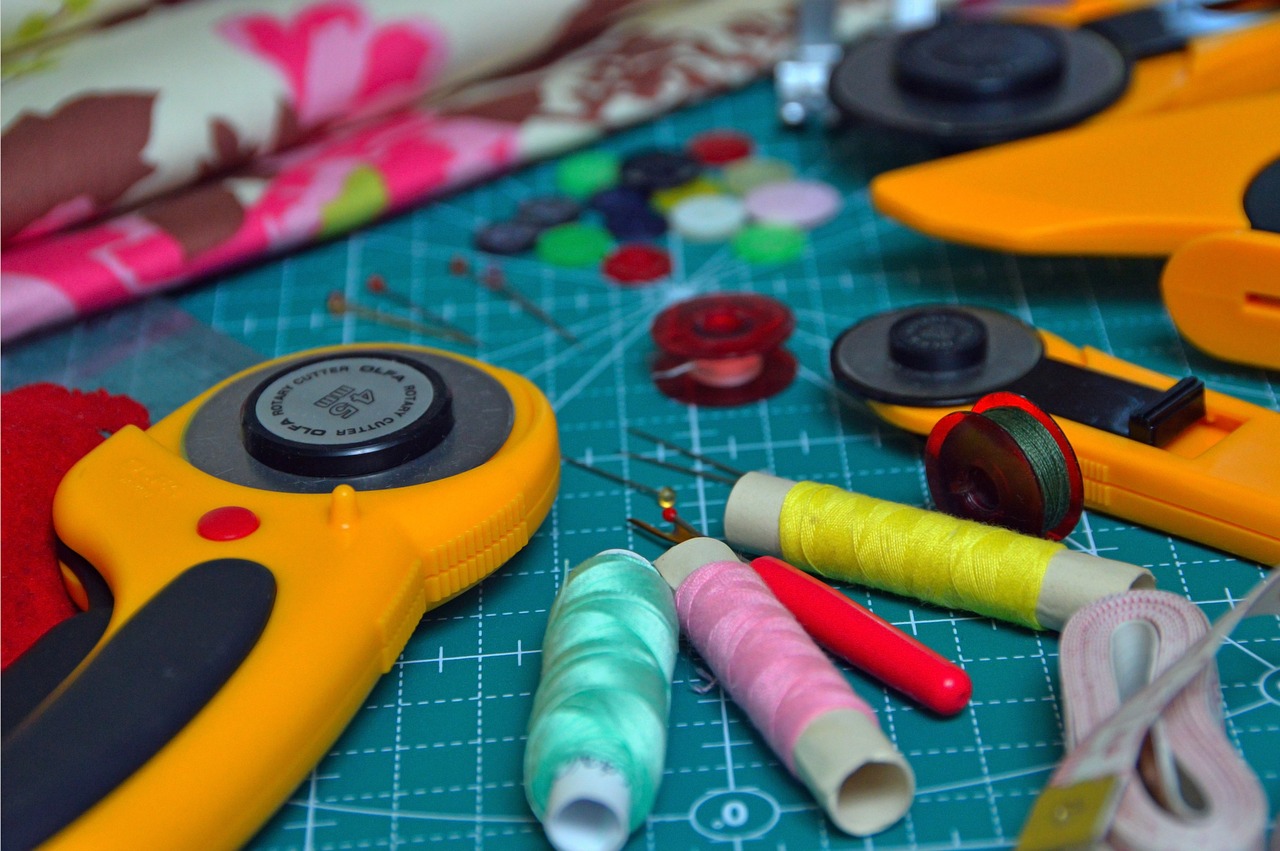
Online Resources
In today's digital age, the world of quilting has expanded beyond the confines of our sewing rooms and into the vast realm of the internet. Whether you're a seasoned quilter or just starting, online resources can be your best friend. They provide a treasure trove of ideas, tutorials, and community support that can significantly enhance your quilting journey. Imagine having a mentor available 24/7, ready to guide you through every stitch and seam! That's the magic of online resources.
One of the best places to start is with quilting blogs and websites dedicated to sharing tips, patterns, and inspiration. For instance, sites like Craftsy and Quilting Daily offer a plethora of tutorials that cater to various skill levels. You can find everything from basic piecing techniques to advanced quilting methods. Additionally, many of these sites feature forums where you can ask questions and get advice from experienced quilters, creating a sense of community that can be incredibly motivating.
Social media platforms, especially Instagram and Pinterest, are also fantastic resources for quilters. On Instagram, you can follow hashtags like #Quilting or #QuiltInspiration to discover stunning quilt designs and innovative techniques from quilters around the globe. Pinterest, on the other hand, serves as a visual discovery engine where you can pin your favorite patterns and tutorials for easy access later. Just think of it as your personal quilting scrapbook, filled with ideas that spark joy and creativity!
Moreover, YouTube is an invaluable resource for visual learners. Channels dedicated to quilting offer step-by-step video tutorials that can help you master new techniques. Watching someone else sew can demystify the process and provide you with tips that you might not find in written instructions. For example, channels like Missouri Star Quilt Company and The Quilt Show provide engaging content that not only teaches you how to quilt but also keeps you entertained.
Lastly, don't overlook the power of online quilting communities. Websites like QuiltForum and Facebook Groups allow you to connect with fellow quilters who share your passion. These platforms can be a goldmine for exchanging ideas, troubleshooting problems, and even participating in challenges or swaps. Just imagine sharing your latest quilt project and receiving instant feedback and encouragement from a supportive community!
In summary, the internet is brimming with resources that can make your quilting experience more enjoyable and fulfilling. From blogs and social media to video tutorials and online communities, there's something out there for everyone. So, grab your laptop or tablet, and dive into the vibrant world of online quilting resources—you might just discover your next favorite project!
Q1: What are the best websites for beginner quilters?
A1: Some excellent websites for beginners include Craftsy, Quilting Daily, and YouTube channels like Missouri Star Quilt Company. These resources offer tutorials and patterns that are easy to follow.
Q2: How can I find quilting communities online?
A2: You can find quilting communities on social media platforms like Facebook and Instagram. Joining forums like QuiltForum also provides a space to connect with fellow quilters.
Q3: Are there free resources available for quilting?
A3: Yes, many websites and blogs offer free patterns and tutorials. YouTube is also a fantastic source for free instructional videos on various quilting techniques.
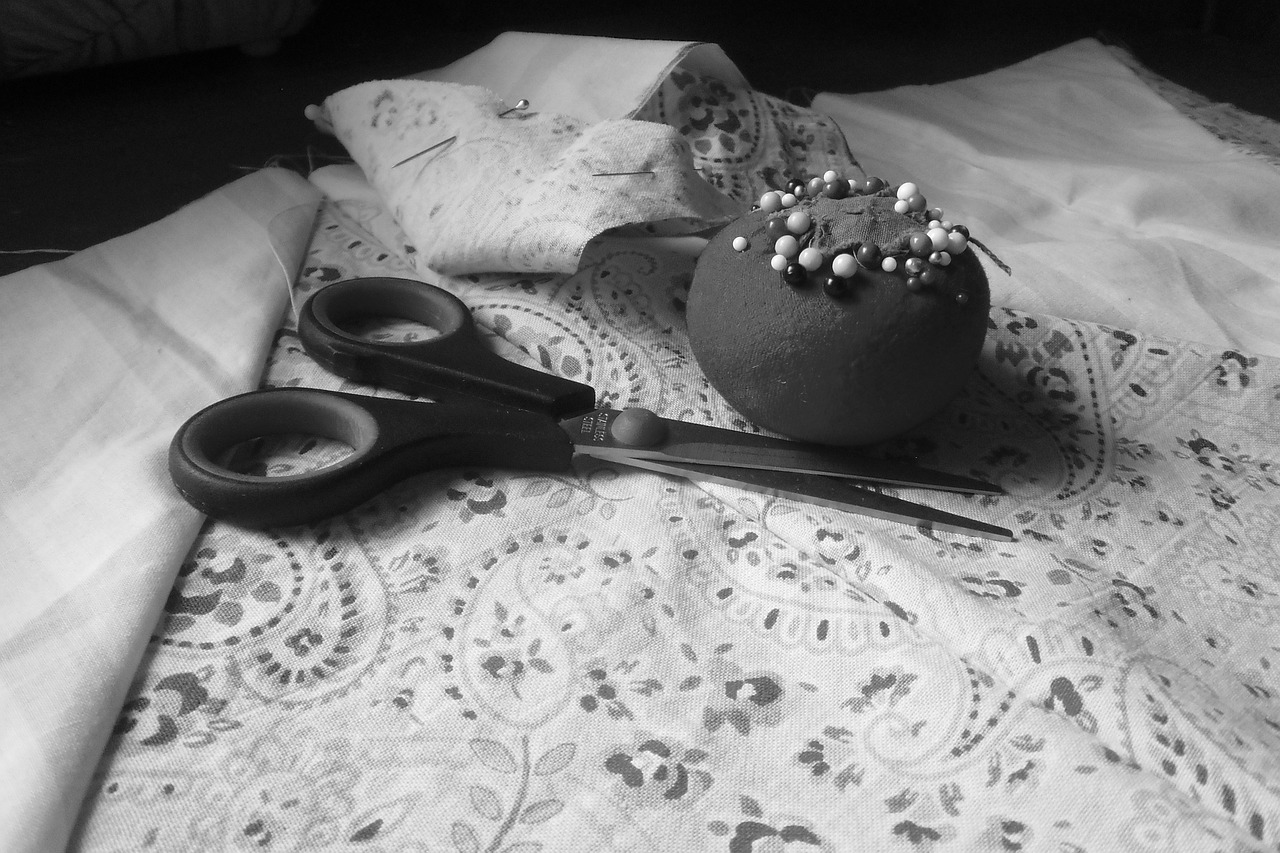
Quilting Communities
Joining a quilting community can truly elevate your quilting experience. Imagine being surrounded by like-minded individuals who share your passion for fabric, patterns, and creativity! These communities can be found both online and in-person, offering a wealth of support, inspiration, and camaraderie. Whether you’re a seasoned quilter or just starting out, connecting with fellow enthusiasts can provide you with valuable insights and motivation.
In quilting communities, you can exchange ideas, share tips, and even collaborate on projects. Many quilters find that having a group to bounce ideas off of can spark creativity and lead to innovative designs. Additionally, these communities often host events such as workshops, retreats, and quilt shows, which can be a fantastic way to hone your skills and meet new friends. The sense of belonging and shared purpose can make your quilting journey even more enjoyable.
Online platforms like social media groups and dedicated quilting websites have made it easier than ever to connect with other quilters from around the globe. Here are some popular online quilting communities:
- Facebook Groups: There are countless groups dedicated to quilting where members share their projects, ask for advice, and support each other.
- Instagram: Follow hashtags like #QuiltingCommunity or #QuiltAlong to find inspiration and connect with fellow quilters.
- Quilting Forums: Websites like Quiltville and The Quilting Board offer forums for discussions, tips, and sharing experiences.
In-person communities can be just as enriching. Local quilting guilds often meet regularly, providing a space for members to learn from one another, showcase their work, and participate in group projects. Many guilds also engage in charitable activities, such as making quilts for those in need, which can be a fulfilling way to give back while enjoying your craft.
So, whether you choose to connect online or join a local guild, immersing yourself in a quilting community can enhance your skills and make your hobby more fulfilling. After all, quilting is not just about the finished product; it’s about the friendships and memories you create along the way!
Q: How do I find a quilting community near me?
A: You can search online for local quilting guilds or visit fabric stores that often host quilting classes and events. Additionally, community centers may have quilting clubs.
Q: Are online quilting communities effective?
A: Absolutely! Online communities can provide a wealth of resources, inspiration, and support. They allow you to connect with quilters from different backgrounds and skill levels.
Q: What should I expect when joining a quilting guild?
A: Expect to meet fellow quilting enthusiasts, participate in workshops, and engage in discussions about techniques and projects. Many guilds also have show-and-tell sessions where you can showcase your work!
Q: Can I participate in quilting events if I'm a beginner?
A: Yes! Many events are designed for all skill levels, and you’ll find that most members are eager to help beginners learn and grow.

Setting Up Your Quilting Space
Creating a dedicated quilting space can transform your hobby from a mere pastime into a delightful experience. Imagine walking into a room that is not just functional but also inspiring! A well-organized and comfortable quilting area can make all the difference in how you feel while you work on your projects. It's like having your own little sanctuary where creativity flows freely. So, let’s dive into how you can set up a quilting space that sparks joy and productivity.
First off, think about location. Ideally, you want a space that is quiet and away from the hustle and bustle of daily life. A corner of your living room, a spare bedroom, or even a cozy nook in the basement can work wonders. Make sure it has good lighting, as quilting requires precision, and you don’t want to strain your eyes. Natural light is a bonus, but if that’s not an option, consider investing in bright, adjustable lamps.
Next, let’s talk about organization. Having your tools and materials within easy reach will save you time and keep your creative juices flowing. Consider using a combination of storage solutions such as:
- Shelves: Great for displaying fabrics and books.
- Baskets: Ideal for storing smaller items like threads and scissors.
- Rolling carts: Perfect for keeping tools mobile and accessible.
When arranging your supplies, think about workflow. Place your cutting mat, rotary cutter, and rulers near your fabric storage to minimize movement. This setup is akin to a chef having their knives and ingredients close at hand—efficiency is key!
Now, let’s not forget about comfort. Quilting can involve long hours of sitting, so invest in a good chair that provides proper support. You might even consider a chair with adjustable height to match your sewing table. Also, think about the ambiance of your space. Adding personal touches like artwork, plants, or even a cozy quilt draped over your chair can make the area feel warm and inviting. It’s your creative haven, after all!
Lastly, consider incorporating a design wall into your quilting space. This can be as simple as a piece of foam board covered in flannel or batting. It allows you to arrange and rearrange your quilt pieces without having to sew them together right away. It’s like having a canvas where you can explore different layouts before committing to a design. Plus, it gives you the chance to step back and admire your work as it evolves.
In summary, setting up your quilting space is about more than just having the right tools; it’s about creating an environment that nurtures your creativity and makes you feel at home. With the right layout, organization, and personal touches, your quilting area can become a place where you not only create beautiful quilts but also find joy and relaxation.
1. What are the essential tools I need for quilting?
You’ll need a rotary cutter, cutting mat, rulers, fabric scissors, needles, and thread. Don’t forget about your sewing machine and a good iron!
2. How can I make my quilting space more inspiring?
Add personal touches like artwork, photos, or a vision board. Surround yourself with fabrics and colors that inspire you!
3. Is it necessary to have a dedicated quilting space?
While it's not necessary, having a dedicated space can help you focus and enjoy your quilting more. It makes it easier to dive into projects whenever inspiration strikes.
4. How do I keep my quilting space organized?
Use storage bins, baskets, and shelves to categorize your supplies. Regularly declutter and keep only what you truly need and love.
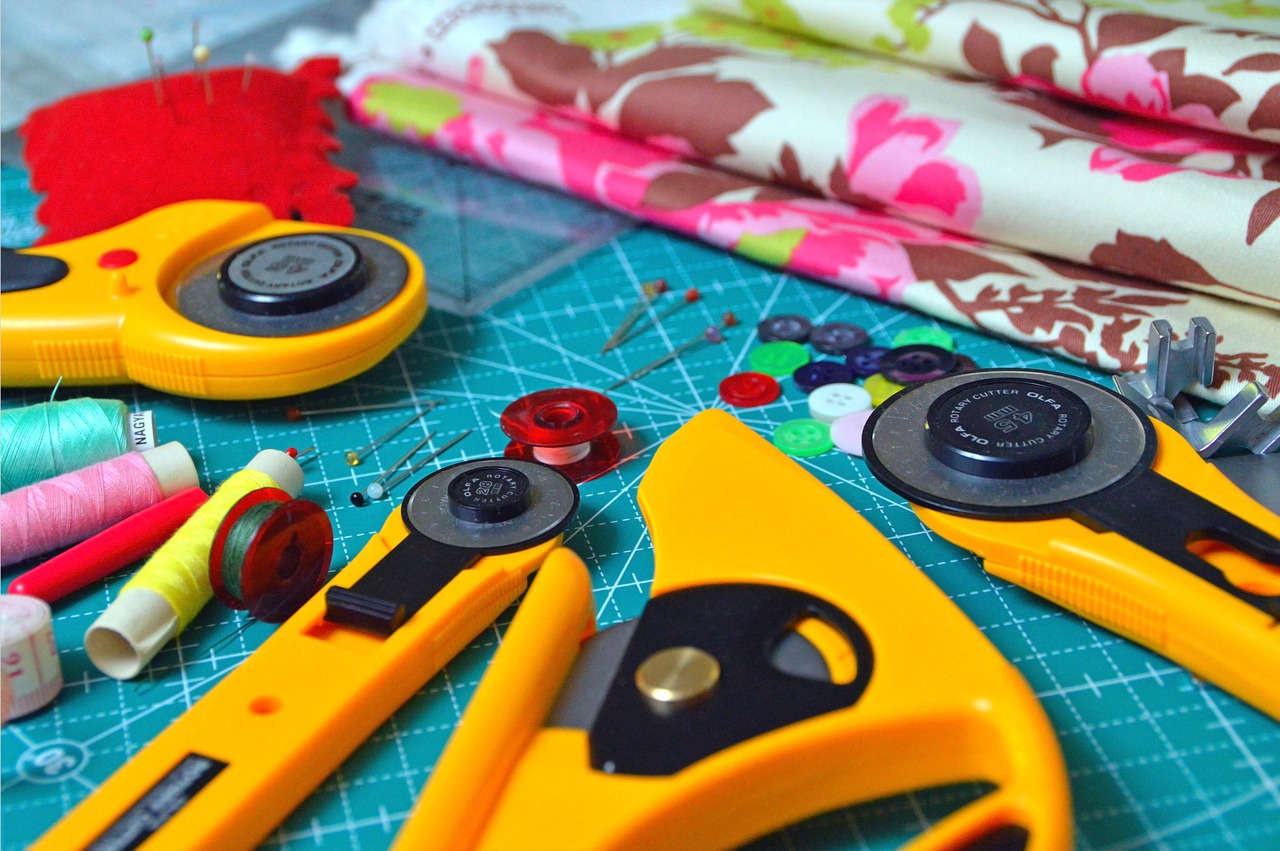
Organizing Your Tools
Keeping your quilting tools organized is not just a matter of aesthetics; it’s about creating a workspace that enhances your creativity and efficiency. Imagine stepping into a space where everything you need is at your fingertips, neatly arranged, and easy to find. This can significantly reduce the frustration that often comes with searching for misplaced tools and materials. To achieve this, consider investing in storage solutions that suit your personal style and the space you have available.
One effective approach is to categorize your tools based on their function. For instance, you might have a section for cutting tools, another for sewing supplies, and yet another for embellishments. Using clear bins or labeled drawers can make it easy to locate what you need without rummaging through a chaotic pile of supplies. Here’s a quick overview of some essential categories you might consider:
- Cutting Tools: Rotary cutters, scissors, and cutting mats.
- Sewing Supplies: Needles, threads, and sewing machines.
- Measuring Tools: Rulers, tape measures, and seam gauges.
- Embellishments: Buttons, ribbons, and other decorative items.
Additionally, think about the layout of your workspace. A well-organized area not only improves efficiency but also makes the quilting process more enjoyable. Position your cutting mat near your sewing machine to minimize the distance you need to move between tasks. Consider using a pegboard on the wall to hang tools like scissors and rulers, keeping them visible and accessible. This not only saves space but also adds a touch of creativity to your quilting area.
Another useful tip is to create a “project box” for each quilt you’re working on. This box can hold all the materials and tools specific to that project, ensuring that everything you need is in one place. When you’re ready to quilt, simply grab your project box and you’re good to go! This method can also help you keep track of your progress and any leftover materials for future projects.
Lastly, don’t forget to regularly declutter your workspace. As you accumulate tools and supplies over time, it’s easy for unnecessary items to pile up. Schedule a monthly or seasonal clean-up to assess what you really need and what can be donated or discarded. This practice not only keeps your space tidy but also allows you to rediscover tools that you may have forgotten about, reigniting your passion for quilting.
In conclusion, organizing your quilting tools is a vital step in making your hobby more enjoyable and productive. By creating a system that works for you, you can focus more on the creative process and less on the chaos. So, roll up your sleeves, get organized, and watch how your quilting experience transforms!
Q: How can I keep my quilting tools from getting dusty?
A: Regularly cover your tools with fabric or store them in sealed containers. Additionally, cleaning your workspace frequently can help minimize dust accumulation.
Q: What should I do if I have limited space for my quilting tools?
A: Consider using multi-functional furniture, such as tables with storage or collapsible shelves. Vertical storage solutions, like pegboards, can also maximize your space.
Q: How often should I reorganize my quilting tools?
A: It’s a good idea to reassess your organization every few months or whenever you start a new project. This helps ensure that your system still meets your needs.

Creating a Comfortable Atmosphere
When it comes to quilting, the environment you create can significantly impact your overall experience. Imagine curling up in a cozy nook, surrounded by the soft glow of warm lighting, with your favorite fabrics at arm's reach. is not just about physical comfort; it’s about setting the stage for creativity and relaxation. To achieve this, consider various elements that can enhance your quilting sessions.
First and foremost, lighting plays a crucial role. Natural light is fantastic during the day, but as the sun sets, you’ll want to have adequate artificial lighting. A combination of overhead lights and task lighting, like a desk lamp with adjustable brightness, can help you see your fabrics clearly and reduce eye strain. Opt for bulbs that mimic daylight to maintain a vibrant workspace.
Next, think about your seating. You’ll be spending hours at your quilting station, so choose a chair that supports your back and keeps you comfortable. Look for ergonomic options that allow you to maintain good posture, and don’t forget to have a cushion for added support. If possible, set up your space so you can easily shift positions or take a break without hassle.
Another important aspect is organization. A clutter-free space can foster a sense of calm and focus. Use storage solutions like bins, baskets, or shelves to keep your tools and materials organized. Consider labeling containers so you can quickly find what you need without rummaging through piles of fabric. An organized space not only looks appealing but also enhances your efficiency when working on projects.
Additionally, decor can bring personality to your quilting area. Hang up inspiring artwork or photographs that resonate with your creative spirit. You might even want to display some of your finished quilts as a reminder of your accomplishments. Plants can also add a refreshing touch, bringing life and color to your space. Just a few potted herbs or flowers can make your quilting area feel more inviting.
Lastly, don’t forget about sound. The right background noise can set the mood for your quilting sessions. Whether it’s soft music, an engaging podcast, or even the gentle hum of a fan, find what helps you feel relaxed and focused. Consider creating a playlist specifically for your quilting time, filled with tunes that inspire creativity and calm.
In summary, creating a comfortable atmosphere for quilting involves thoughtful attention to lighting, seating, organization, decor, and sound. By focusing on these elements, you can transform your quilting space into a haven of creativity and relaxation, making every session a joy rather than a chore. So, go ahead and make your quilting area a reflection of your personal style and comfort—your creativity will thank you!
- How can I improve my quilting skills?
Practice is key! Start with simple projects and gradually challenge yourself with more complex patterns. - What type of fabric is best for beginners?
Quilters often recommend starting with cotton fabric due to its ease of use and availability. - How do I maintain my quilting tools?
Regular cleaning and proper storage can extend the life of your tools. Always keep them dry and away from direct sunlight. - Can I quilt in a small space?
Absolutely! You can create a cozy quilting nook even in a small area by being organized and using compact storage solutions.

Incorporating Mindfulness
Quilting can be more than just a creative outlet; it can also serve as a powerful tool for mindfulness. Imagine sitting at your sewing machine, the rhythmic sound of the needle piercing through fabric, while your mind gently drifts away from the chaos of daily life. By incorporating mindfulness into your quilting routine, you can transform this hobby into a meditative practice that not only enhances your skills but also brings a sense of peace and relaxation. So, how can you achieve this? Let’s explore some techniques that can help you stay present and fully engaged in the process.
One of the most effective ways to cultivate mindfulness while quilting is to focus on the process rather than the outcome. It's easy to get caught up in the end goal—a beautiful quilt that you can proudly display or gift to a loved one. However, when you shift your attention to the individual steps involved in quilting, you allow yourself to savor the journey. Each cut of fabric, each stitch, and each design choice becomes an opportunity to practice mindfulness. Try to immerse yourself in the tactile sensations of the fabric, the colors, and the patterns. This approach not only makes the quilting experience more enjoyable but also helps to reduce stress and anxiety.
Another important aspect of incorporating mindfulness into your quilting is taking regular breaks. It’s tempting to dive into a project and lose track of time, but this can lead to burnout and frustration. Instead, set a timer for focused sewing sessions, and when it goes off, take a moment to step away. Use this time to stretch, breathe deeply, or even meditate for a few minutes. This pause allows your mind to reset and can spark new ideas and creativity when you return to your project. Consider creating a small ritual for your breaks, such as sipping herbal tea or listening to calming music, to enhance your overall experience.
To further enrich your quilting practice with mindfulness, consider creating a peaceful atmosphere in your quilting space. The environment you work in can significantly impact your mental state. Ensure that your space is well-lit, organized, and free from distractions. You might even want to incorporate elements that soothe your senses, like scented candles or soft music. By creating a comfortable and inviting atmosphere, you can foster a sense of calm that enhances your ability to focus and enjoy the quilting process.
In summary, incorporating mindfulness into your quilting practice can transform it from a simple hobby into a fulfilling and relaxing experience. By focusing on the process, taking regular breaks, and creating a serene environment, you can cultivate a deeper connection with your craft. So, the next time you sit down to quilt, remember to breathe, enjoy each moment, and let the fabric guide you on a journey of creativity and tranquility.
- How can I stay present while quilting?
Focus on each step of the process, enjoy the textures and colors, and practice deep breathing to maintain mindfulness.
- What are some good break activities during quilting?
Stretching, deep breathing, sipping tea, or listening to calming music can refresh your mind and body.
- How can I create a calming quilting space?
Keep your area organized, use soft lighting, and add personal touches that make you feel relaxed and inspired.

Focusing on the Process
When it comes to quilting, it's easy to get caught up in the end result—the beautiful quilt you envision. However, rather than the outcome can transform your quilting experience into something truly enjoyable and fulfilling. Think of quilting as a journey, not just a destination. Each stitch, each cut, and each fabric choice is a part of this creative adventure.
Embracing the journey allows you to appreciate the small victories along the way. For instance, the satisfaction of cutting your fabric accurately or the joy of piecing together a complicated block can be just as rewarding as the final quilt itself. By concentrating on these moments, you can cultivate a sense of mindfulness that enhances your overall experience. Here are a few ways to help you stay present:
- Mindful Stitching: Pay attention to the rhythm of your sewing machine and the feel of the fabric under your fingers. Let the repetitive motions soothe your mind.
- Enjoy the Color Play: Take time to explore color combinations as you select your fabrics. Allow yourself to experiment without the pressure of perfection.
- Reflect on Your Progress: Regularly step back and admire your work. Acknowledge how far you've come, even if it's just a few completed blocks.
Incorporating these practices into your quilting routine can help you develop a deeper connection with your craft. Instead of rushing to finish, allow yourself to savor each moment spent with your materials. This shift in perspective not only enhances your enjoyment but can also lead to unexpected bursts of creativity.
Moreover, when you focus on the process, you give yourself permission to make mistakes. Quilting is not about achieving perfection; it's about expressing yourself and enjoying the art. Mistakes can lead to new ideas and innovative solutions, often resulting in a quilt that is uniquely yours. So, the next time you find yourself frustrated with a tricky pattern or an unexpected fabric mishap, take a deep breath and remind yourself that these moments are part of the journey.
Lastly, consider setting aside dedicated time for quilting where you can immerse yourself without distractions. Turn off your phone, put on some calming music, and create a space where you can truly focus on the art of quilting. This not only enhances your experience but also allows you to connect more deeply with your craft, transforming it into a truly meditative practice.
Q: How can I stay motivated while quilting?
A: Set small, achievable goals for each session and celebrate your progress. Joining a quilting community can also provide motivation and support.
Q: What if I make a mistake in my quilting?
A: Mistakes are part of the learning process! Embrace them as opportunities for creativity. Sometimes, they can lead to unique designs you hadn’t considered before.
Q: How do I find time to quilt?
A: Schedule regular quilting sessions into your week, even if it's just 30 minutes. Treat this time as a valuable appointment for yourself.
Q: Can quilting really help with stress relief?
A: Absolutely! The repetitive motions and focus required in quilting can be meditative, helping to reduce stress and promote relaxation.
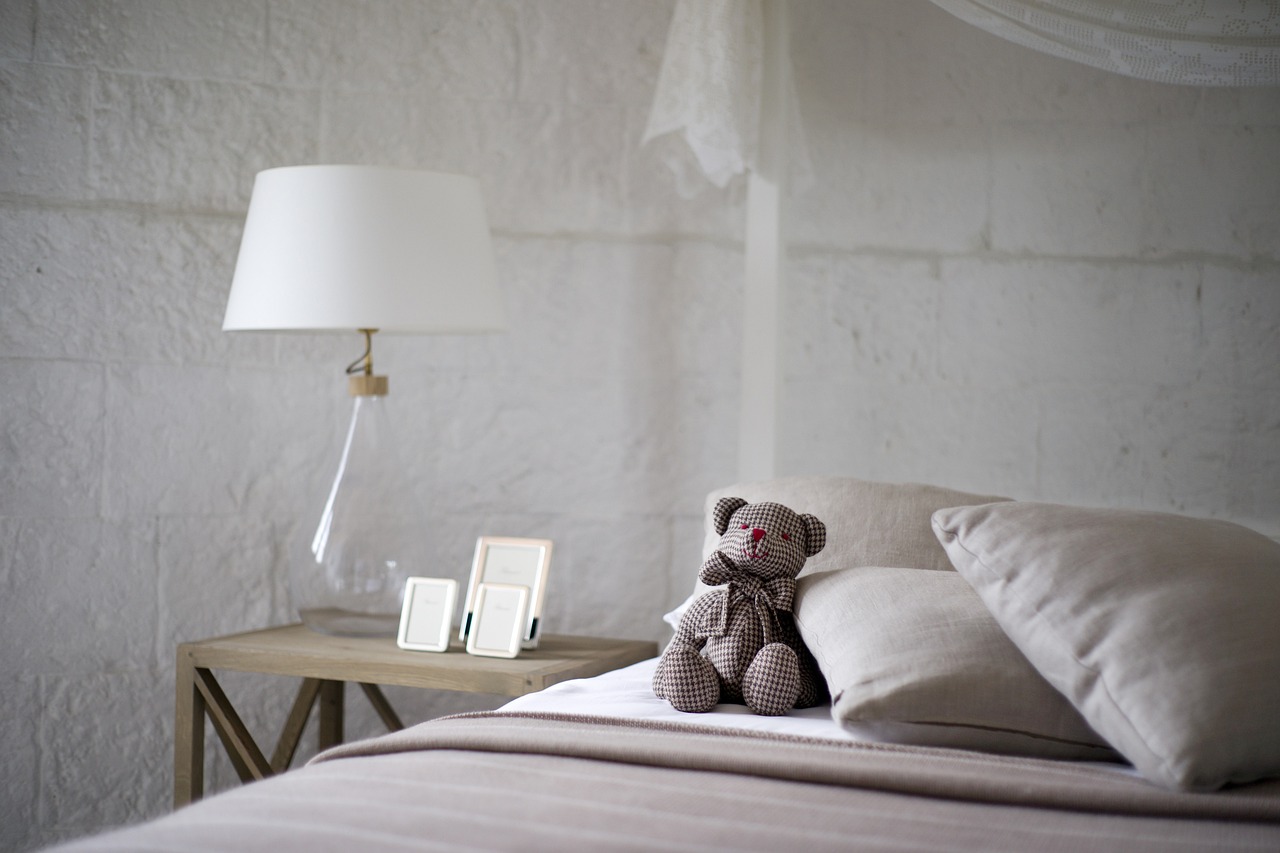
Taking Breaks
When you dive into the world of quilting, it can be so easy to lose track of time. You become engrossed in the rhythm of cutting, piecing, and sewing, and before you know it, hours have passed. While this deep focus can be rewarding, is crucial for maintaining your creativity and preventing burnout. Think of it like a long road trip; if you don't stop to refuel and stretch your legs, you're bound to run out of gas or feel cramped. So, how do you incorporate breaks into your quilting routine effectively?
First, consider setting a timer. A simple technique is the Pomodoro Technique, where you work for 25 minutes and then take a 5-minute break. This method not only helps keep your mind fresh but also gives you something to look forward to. During these breaks, you can stand up, walk around, or even grab a quick snack. Just remember, the goal is to recharge, not to dive into another task!
Moreover, it’s beneficial to use your breaks to engage in activities that inspire you. For instance, you might take a moment to browse through quilting magazines or scroll through your favorite quilting blogs. This can spark new ideas and keep your passion alive. Alternatively, you can step outside for some fresh air—nature has a way of rejuvenating the spirit and can often lead to bursts of creativity when you return to your sewing machine.
Another effective strategy is to schedule longer breaks throughout your quilting session. After completing a significant portion of your quilt, give yourself a longer respite. This could be a leisurely lunch or a brief walk around the block. Taking these longer breaks allows your mind to process what you've accomplished and can lead to new insights about your project. Think of it as letting your quilt marinate; sometimes, stepping away can help you see things more clearly upon your return.
Incorporating breaks isn’t just about stepping away from your work; it’s about enhancing your overall quilting experience. When you allow yourself these pauses, you’re not just preventing fatigue; you’re also fostering a deeper connection with your craft. So, next time you find yourself deep in the quilting zone, remember: taking breaks is not a sign of weakness, but rather a smart strategy to enhance your enjoyment and creativity.
- How often should I take breaks while quilting? It's recommended to take short breaks every 25-30 minutes and longer breaks after completing significant sections of your project.
- What activities can I do during my breaks? You can stretch, grab a snack, browse quilting resources, or take a short walk to refresh your mind.
- Will taking breaks improve my quilting skills? Yes! Breaks can help prevent burnout and keep your creativity flowing, which ultimately enhances your skills.
- How can I remind myself to take breaks? Setting a timer or using a reminder app can help you stay on track and ensure you take those important breaks.

Exploring Different Quilting Styles
Quilting is not just a craft; it's a journey through a vibrant world of creativity and expression. As you dive deeper into this delightful hobby, you'll discover that diversity in quilting styles can keep your passion alive and your projects exciting. Each style tells a story, reflects a culture, and offers unique techniques that can elevate your quilting game. Whether you're a seasoned quilter or just starting out, exploring these various styles can open up a treasure trove of inspiration.
Let's start with traditional quilting, which has roots that stretch back for generations. This style is characterized by classic patterns, such as the beloved Log Cabin or the intricate Double Wedding Ring. Traditional quilts often feature a rich tapestry of fabrics, and the designs are meticulously pieced together to create stunning visual effects. What makes traditional quilting so special is its connection to history and heritage; each quilt can carry meanings and memories that span decades. It's like wrapping yourself in a warm, comforting blanket of nostalgia.
On the other end of the spectrum lies modern quilting. This style is all about breaking the rules and embracing creativity without boundaries. Modern quilts often feature bold colors, asymmetrical designs, and minimalistic patterns that challenge conventional aesthetics. Think of it as a breath of fresh air in the quilting world! Modern quilters frequently use negative space to create striking contrasts, making their work visually dynamic and engaging. The beauty of modern quilting is that it invites experimentation, allowing you to play with different materials and techniques.
As you explore these styles, consider the following aspects:
- Techniques: Traditional quilting often relies on hand-sewing and intricate piecing, while modern quilting embraces machine quilting and innovative methods.
- Fabrics: Traditional quilts may use cotton prints with historical significance, whereas modern quilts might incorporate a mix of contemporary fabrics, including solids and graphic prints.
- Design Philosophy: Traditional quilting values symmetry and repetition, while modern quilting celebrates spontaneity and individual expression.
Moreover, don’t hesitate to blend styles! Many quilters find joy in merging traditional techniques with modern aesthetics, creating a unique hybrid that reflects their personality. Imagine a quilt that features classic blocks but uses vibrant, contemporary colors—it's like having the best of both worlds!
In addition to these styles, there are countless sub-genres within quilting, such as art quilting, which focuses on quilts as a form of artistic expression, and utility quilting, which emphasizes functionality and comfort. Each of these styles offers its own set of challenges and rewards, so don’t shy away from trying something new. You might find that a particular style resonates with you on a deeper level, sparking your creativity and passion for quilting.
In conclusion, exploring different quilting styles is not just about mastering techniques; it's about embracing the journey of creativity. Each quilt you create is a reflection of your personality, your experiences, and your artistic vision. So grab your fabric, let your imagination run wild, and enjoy the beautiful world of quilting!
Q: What is the best quilting style for beginners?
A: Traditional quilting is often recommended for beginners, as it teaches basic techniques and provides a solid foundation for future projects.
Q: Can I mix different quilting styles in one project?
A: Absolutely! Mixing styles can lead to unique and innovative designs that showcase your creativity.
Q: How do I find my preferred quilting style?
A: Experiment with different styles and techniques. Attend quilting workshops, browse online resources, and connect with other quilters to discover what resonates with you.

Traditional Quilting
When you think about , what comes to mind? Perhaps it's the comforting image of a grandmother stitching together colorful fabrics, or the intricate patterns that tell a story passed down through generations. Traditional quilting isn't just a craft; it's a celebration of heritage and creativity that has stood the test of time. This form of quilting often involves classic patterns such as nine-patch, log cabin, and double wedding ring, each with its own unique history and significance.
One of the most beautiful aspects of traditional quilting is its connection to culture. Many patterns have roots in specific regions or communities, reflecting the lives and experiences of those who created them. For example, the Mariner's Compass pattern symbolizes navigation and exploration, while the Star of Bethlehem represents hope and guidance. By choosing traditional patterns, you’re not just creating a quilt; you’re also honoring the stories behind them.
To get started with traditional quilting, it’s essential to familiarize yourself with a few key techniques. Here are some fundamental aspects to consider:
- Fabric Selection: Choose high-quality cotton fabrics that will stand the test of time. Look for fabrics with rich colors and patterns that resonate with your personal style.
- Block Construction: Traditional quilts often consist of blocks that are sewn together. Mastering block construction is crucial for achieving a polished look.
- Quilting Techniques: Hand quilting is a hallmark of traditional quilting. It may take longer, but the results are often more personal and fulfilling.
As you dive into traditional quilting, don't be afraid to experiment with different patterns and techniques. Each quilt you create is an opportunity to express your unique style while paying homage to the quilters who came before you. Plus, the meditative process of piecing together fabric can be incredibly rewarding. You'll find that every stitch you make is a step closer to a beautiful finished piece that tells your story.
In addition to the joy of creating, traditional quilting also offers a wonderful way to connect with others. Joining a local quilting group or participating in community events can enhance your experience. You’ll meet fellow quilters who share your passion, exchange tips, and maybe even collaborate on projects. The sense of camaraderie and support in these communities can inspire you to push your creative boundaries and explore new techniques.
In summary, traditional quilting is more than just a hobby; it's a rich tapestry of history, culture, and creativity. Whether you're drawn to the classic patterns or the soothing process of stitching, embracing traditional quilting can lead to a fulfilling and joyful experience. So grab your fabrics, thread, and a cup of tea, and let the world of traditional quilting unfold before you!
Q: What materials do I need to start traditional quilting?
A: You will need high-quality cotton fabrics, a rotary cutter, a cutting mat, a ruler, quilting thread, and a sewing machine (or hand sewing supplies). Don't forget to have a comfortable workspace!
Q: How long does it take to make a traditional quilt?
A: The time it takes to make a quilt varies greatly depending on the pattern, size, and your sewing speed. A small quilt can take a few days, while larger quilts may take weeks or even months to complete.
Q: Can I use my own patterns for traditional quilting?
A: Absolutely! While traditional quilting often involves classic patterns, you can create your own designs. Just remember to keep the principles of piecing and symmetry in mind.
Q: Is traditional quilting suitable for beginners?
A: Yes! Many traditional patterns are beginner-friendly. Start with simple blocks and gradually work your way up to more complex designs as you gain confidence in your skills.
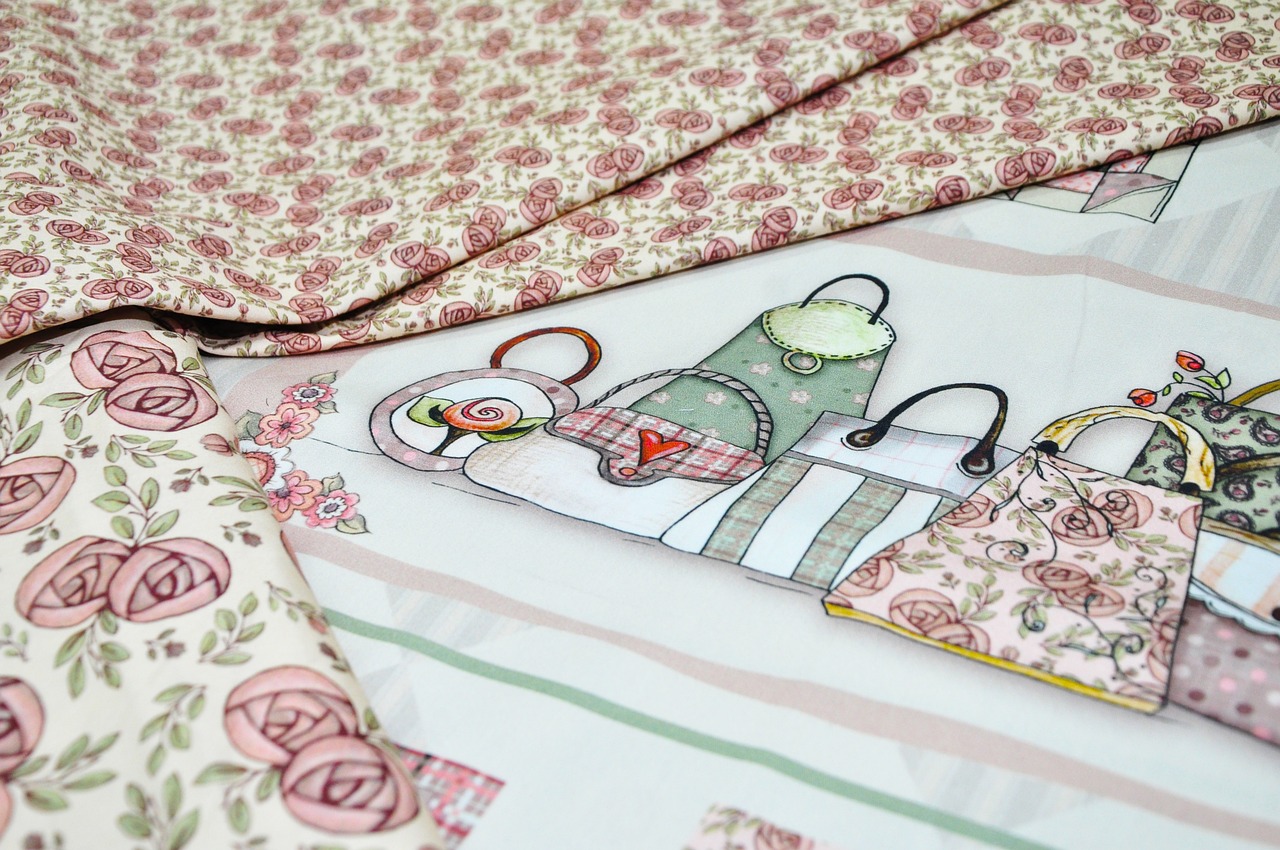
Modern Quilting
Modern quilting is like a breath of fresh air in the quilting world, blending traditional craftsmanship with contemporary aesthetics. It's a vibrant movement that embraces bold colors, innovative designs, and a more relaxed approach to quilting. If you've ever felt constrained by the rigid rules of traditional quilting, modern quilting offers a delightful escape, allowing you to express your creativity in ways that feel fresh and exciting.
One of the defining characteristics of modern quilting is its use of negative space. This concept involves intentionally leaving areas of the quilt unsewn or using solid colors to create striking contrasts with patterned fabrics. Imagine a canvas where the empty spaces are just as important as the filled ones; this approach can add depth and intrigue to your quilts, making them stand out in any room.
Another key aspect of modern quilting is the emphasis on asymmetry and geometric shapes. Unlike traditional quilts that often focus on symmetry and repetitive patterns, modern quilts can feature unexpected angles and layouts. This freedom allows quilters to experiment with various shapes and sizes, leading to unique designs that reflect personal style. For example, you might find quilts made up of large triangles, circles, or even abstract forms that challenge the traditional quilting norms.
Modern quilters also tend to favor a more minimalist aesthetic. This doesn't mean less work; rather, it’s about choosing fewer fabrics and patterns that make a bold statement. A well-placed pop of color or an eye-catching print can transform a simple quilt into a stunning piece of art. This minimalist approach often leads to quilts that are not just functional but also serve as beautiful decor in your home.
In addition to the aesthetic shifts, modern quilting has also embraced technology. Many quilters now use digital tools for designing their quilts, from software that helps visualize layouts to online resources for finding inspiration. Social media platforms, particularly Instagram and Pinterest, have become treasure troves for modern quilters, allowing them to share their creations and connect with a global community. This exchange of ideas and techniques fosters a sense of camaraderie among quilters, making the hobby even more enjoyable.
Moreover, the community aspect of modern quilting is incredibly vibrant. Local quilt shops and online forums often host workshops and challenges that encourage quilters to push their boundaries and try new techniques. Whether you're a seasoned quilter or just starting, participating in these events can be a fantastic way to learn and grow your skills. You might even find a few friends along the way who share your passion for this exciting craft!
Ultimately, modern quilting is about breaking free from tradition and finding joy in the creative process. It invites quilters to explore their unique styles, experiment with new techniques, and connect with others who share their enthusiasm. So, if you're looking to add a modern twist to your quilting journey, don't hesitate to dive in. Embrace the unexpected, play with colors, and let your imagination run wild. You never know what stunning creations you might produce!
Q: What materials are commonly used in modern quilting?
A: Modern quilting often utilizes a mix of cotton fabrics, including solids, prints, and even unconventional materials like linen or jersey. The focus is on vibrant colors and high-quality fabrics that enhance the overall design.
Q: Do I need special tools for modern quilting?
A: While traditional quilting tools like rotary cutters and rulers are still essential, modern quilters may also use digital design software and online resources to help with planning and inspiration.
Q: Can I incorporate traditional techniques into modern quilting?
A: Absolutely! Many modern quilters blend traditional techniques with contemporary designs. The beauty of modern quilting lies in its flexibility, so feel free to experiment and mix styles!
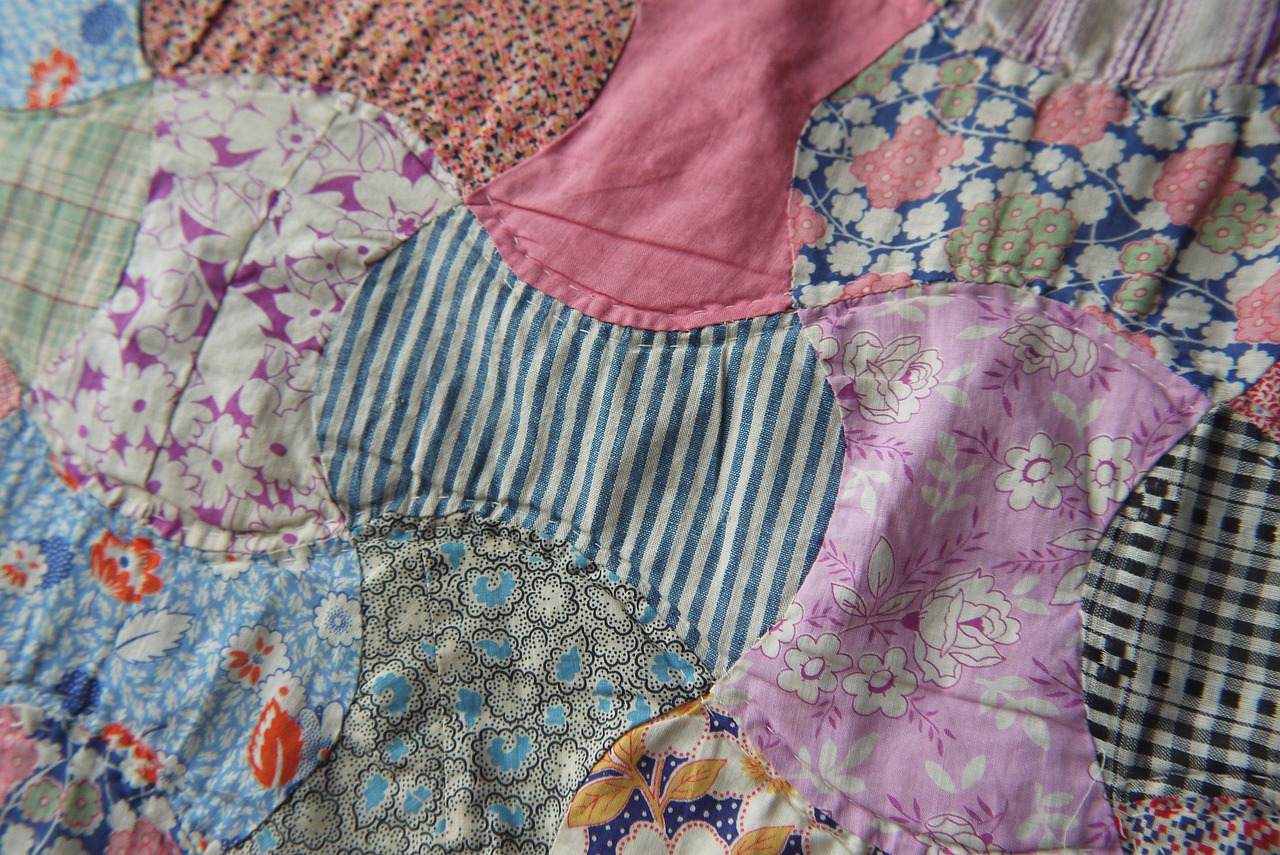
Sharing Your Quilts
Sharing your quilts is more than just displaying your hard work; it's about connecting with others and celebrating creativity. When you finish a quilt, it’s like sending a piece of your heart into the world. Whether you’re a seasoned quilter or just starting out, showcasing your creations can be an incredibly rewarding experience. So, how can you effectively share your quilts? Let’s dive into some exciting avenues that can help you highlight your craftsmanship and inspire others.
One of the most vibrant ways to share your quilts is through social media platforms. Websites like Instagram and Pinterest are perfect for showcasing your work, as they allow you to reach a broad audience. You can create a dedicated quilting account or use your personal one to post pictures of your finished quilts, share progress updates, and even document the quilting process. Using relevant hashtags, such as #QuiltingCommunity or #QuiltOfTheDay, can help your posts gain visibility and connect you with fellow quilting enthusiasts.
Additionally, participating in quilt shows can be a fantastic way to share your work. These events provide a platform where you can display your quilts to a larger audience, receive feedback, and even win awards! If you're considering entering a quilt show, it’s essential to familiarize yourself with the entry requirements, deadlines, and judging criteria. Many local quilting guilds host shows, so check out their schedules and see how you can get involved. Remember, it’s not just about competition; it’s about community and sharing your passion for quilting.
Another heartfelt way to share your quilts is through gifting. Imagine the joy on a loved one’s face when they receive a handmade quilt! Gifting a quilt can create emotional connections that last a lifetime. Whether it's for a wedding, a baby shower, or just because, a quilt is a unique and personal gift that shows you care. Plus, it’s a wonderful way to spread the love of quilting to others. You might even inspire someone to take up the hobby themselves!
To further enhance your sharing experience, consider hosting a quilting party or a “show and tell” session with friends or local quilting groups. These gatherings allow you to showcase your latest projects while also encouraging others to share their work. It’s a fantastic opportunity to exchange tips, techniques, and inspiration. Plus, you get to enjoy some quality time with fellow quilters who understand the passion behind each stitch!
In conclusion, sharing your quilts can be a multifaceted experience that enriches your quilting journey. From social media to quilt shows and personal gifting, there are countless ways to showcase your creativity. So, don’t hold back—let your quilts shine and inspire others in the quilting community!
- What are the best platforms for sharing my quilts online? Instagram, Pinterest, and Facebook are popular choices for sharing quilting projects and connecting with other quilters.
- How can I find local quilt shows to participate in? Check local quilting guilds, community centers, or fabric shops for information on upcoming quilt shows.
- What should I consider when gifting a quilt? Think about the recipient's style, preferences, and any special occasions they might be celebrating.
- How can I improve my quilting skills while sharing my work? Engage with the quilting community online or in person to receive feedback, tips, and encouragement from fellow quilters.

Participating in Quilt Shows
Participating in quilt shows can be one of the most exhilarating experiences for a quilter. Imagine the thrill of seeing your work displayed alongside other talented artisans, each piece telling its own unique story. Quilt shows are not just about competition; they are a celebration of creativity, craftsmanship, and community. Whether you're a novice or a seasoned quilter, entering a quilt show can provide you with invaluable exposure and feedback, and it can even spark new friendships.
Before you dive into the world of quilt shows, it's essential to understand the process. Many shows have specific categories, rules, and entry requirements. Typically, you will need to:
- Choose a category that best fits your quilt, such as traditional, modern, or art quilts.
- Pay attention to the size restrictions, as each category may have different dimensions.
- Prepare your quilt according to the show’s guidelines, which may include specific binding techniques or labeling requirements.
Once you’ve decided to participate, the next step is to find quilt shows in your area. Many local quilting guilds host annual events, and larger national shows can also be found with a quick online search. Websites like the American Quilter's Society and Quilts, Inc. offer comprehensive lists of upcoming events. Make sure to mark your calendar and plan your entries well in advance!
When your quilt is accepted into a show, the excitement really begins! You’ll want to prepare for the event by thinking about how to present your quilt. A well-displayed quilt can draw attention, so consider how you'll hang it, the lighting, and even the backdrop. Some quilters also opt to create a small story or artist's statement to accompany their work, explaining the inspiration behind their design. This not only engages viewers but also adds a personal touch to your presentation.
Finally, don’t forget to enjoy the experience! Quilt shows often feature workshops, lectures, and vendor booths, providing an excellent opportunity to learn new techniques and discover the latest quilting tools and fabrics. Networking with other quilters can lead to future collaborations or friendships, making the experience even more rewarding.
In summary, participating in quilt shows is a fantastic way to showcase your talent, gain inspiration, and connect with the quilting community. So grab your quilt, enter that show, and let your creativity shine!
Q: Do I need to be an experienced quilter to enter a quilt show?
A: Not at all! Quilt shows often have categories for all skill levels, so whether you’re a beginner or an expert, there’s a place for you.
Q: How can I find quilt shows near me?
A: Check local quilting guilds, community centers, and online platforms like the American Quilter's Society for a list of upcoming events.
Q: What should I include with my quilt entry?
A: Most shows require an entry form, a fee, and sometimes a brief artist statement. Be sure to read the specific requirements for each show.
Q: Can I sell my quilts at a quilt show?
A: Some quilt shows have vendor areas where you can sell your quilts, while others are strictly for display and competition. Check the show’s guidelines for details.

Gifting Your Quilts
Gifting your quilts can be one of the most rewarding experiences in your quilting journey. Each quilt is not just a collection of fabric pieces stitched together; it embodies love, effort, and creativity. When you give a quilt, you are sharing a piece of yourself with someone special. The warmth of a quilt is not just physical; it carries emotional warmth that can create lasting memories.
Imagine the joy on a loved one’s face as they unwrap a beautifully crafted quilt that you made just for them. It’s like giving a hug that lasts forever! Whether it’s for a wedding, a baby shower, or just because, quilts make thoughtful gifts that are cherished for years. The process of choosing colors, patterns, and fabrics tailored to the recipient’s taste adds another layer of personal touch to your gift.
When you gift a quilt, you’re also gifting a story. Each stitch tells a tale of your time spent creating it, the challenges you faced, and the triumphs you celebrated. To make the experience even more special, consider including a little note with the quilt. This note could express your feelings, share the inspiration behind the quilt, or simply wish the recipient happiness. It’s these small details that transform a beautiful quilt into a treasured keepsake.
Moreover, gifting quilts can strengthen your relationships. It’s a way to show your appreciation, love, and care for someone. Here are a few occasions where gifting a quilt can be particularly meaningful:
- Weddings: A quilt can symbolize warmth and comfort in a new marriage.
- Birthdays: Celebrate a loved one’s special day with a personalized quilt.
- New Baby: A baby quilt can be a cherished item for years to come.
- Graduation: A quilt can serve as a reminder of their achievements and your support.
- Just Because: Sometimes, the best gifts are those given without any occasion!
In addition, consider the practical aspects of gifting. Make sure to wash and iron the quilt before presenting it; this ensures it’s in top condition and ready to be loved. Wrapping it in a beautiful package or presenting it in a unique way can also enhance the gifting experience. Think of creative ways to present your quilt, such as hanging it on a wall or draping it over a chair for a stunning reveal.
In conclusion, gifting your quilts is not just about the fabric and stitching; it’s about the connection you create with the recipient. It’s a beautiful way to share your passion for quilting while spreading joy and warmth. So, the next time you finish a quilt, think about who might appreciate that labor of love, and don’t hesitate to make their day a little brighter with your handmade gift!
Frequently Asked Questions
- What materials do I need to start quilting?
To kick off your quilting journey, you'll need some basic materials. Start with quality fabric, a rotary cutter, a cutting mat, sewing machine, and thread. Don’t forget a ruler and pins! Quality tools make a significant difference in your quilting experience.
- How do I learn basic quilting techniques?
Learning basic quilting techniques can be fun and straightforward! You can find tutorials online, take a class at a local craft store, or even join a quilting community. Practice cutting, piecing, and sewing regularly to build your confidence and skills.
- Where can I find inspiration for my quilting projects?
Inspiration is everywhere! Check out quilting blogs, Pinterest boards, or Instagram for fresh ideas. Local quilting groups can also spark creativity through shared experiences and projects. Sometimes, just stepping outside and observing nature can inspire your next quilt design!
- How can I set up an efficient quilting space?
Creating a dedicated quilting space is essential for a smooth workflow. Organize your tools in a way that makes sense to you, ensuring everything is easily accessible. Good lighting and a comfortable chair can make your quilting sessions more enjoyable and productive.
- Can quilting be a form of mindfulness?
Absolutely! Quilting can be a meditative practice. Focus on the process rather than the final product, and take regular breaks to clear your mind. This approach can enhance your relaxation and make your quilting time more enjoyable.
- What are the different quilting styles I can explore?
Diversity in quilting styles keeps the hobby exciting! You can explore traditional quilting with classic patterns or dive into modern quilting, which embraces innovative designs. Trying out different styles can expand your skills and spark new creativity.
- How can I share my finished quilts?
Sharing your quilts can be incredibly rewarding! Consider participating in quilt shows, showcasing your work on social media, or gifting them to friends and family. Each quilt tells a story, and sharing it can create connections and joy.



















